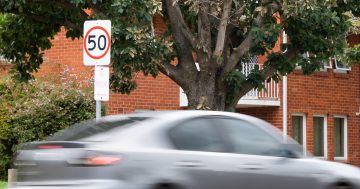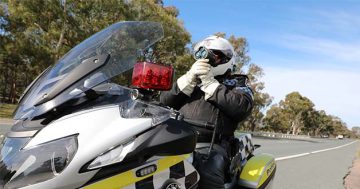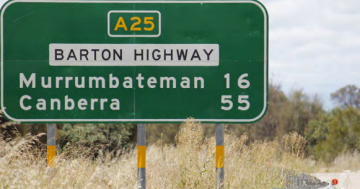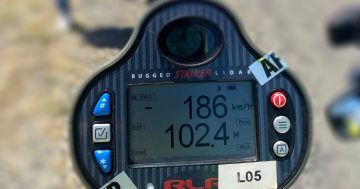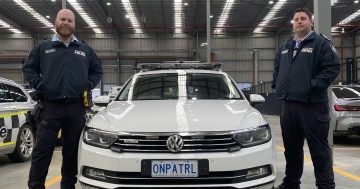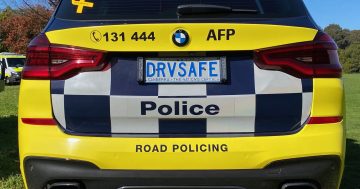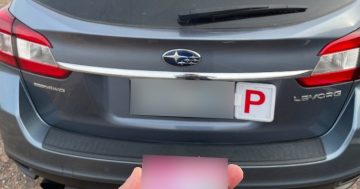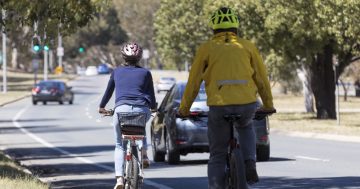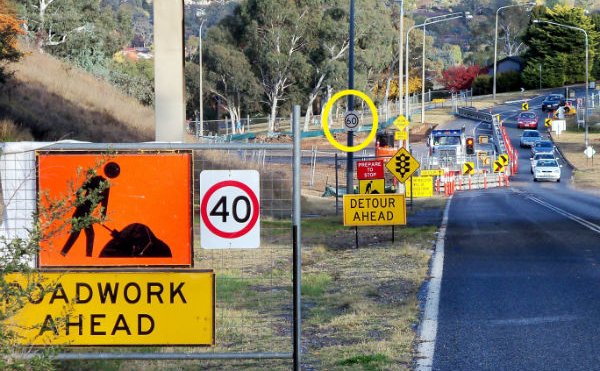
Speed limits can be varied and confusing. Photo: File.
As summer approaches, ACT police are warning us that more Canberrans than ever have been caught speeding. They say, rightly, that speed kills and is a factor in many accidents.
But is there something more at play?
My weekday commute to work from the northside to Region Media‘s inner south offices takes about 20 minutes and involves at least a dozen speed zone changes.
I start at 60 km/h on Wattle St and then it’s 50 km/h turning into Miller St. It’s 60 km/h on Macarthur Avenue then becomes 80 before I turn onto Belconnen Way. On the Parkway it’s 60 km/h for the on-ramp, then 90 km/h while merging, before the limit rises to 100 km/h. I take the Cotter Rd off-ramp and it’s 80 km/h again.
McCulloch St in Curtin begins at 60 km/h and falls to 50 km/h. On Carruthers St, it’s 60 again. And there’s a 40 km/h stretch outside Alfred Deakin High and the Woden School before Denison St becomes a 60km/h zone again.
All within a pretty ordinary suburban commute, and without roadworks.
I’m a law-abiding citizen who drives a lot back and forth to the family farm. I value and need my licence. Every point I’ve lost in the last three years has been in the below 10 km/h range.
Police are right to be concerned about excessive speeding and warn us about the very real dangers of people travelling at almost twice the speed limit on the Territory’s roads. But my points have been lost when there is a speed van over the hill or tucked behind a tree not far after the speed limit changes unexpectedly (you can find the criteria for siting mobile speed vans here).
Why on earth do the ACT’s speed zones vary so much? And how much of the ACT’s apparent speeding epidemic is created by speeding offences of less than 10 km/h above the limit?
I cop the fines. I pay up, I accept I am in the wrong. I set the speed limiter on my car and remind myself to observe every change carefully.
But the cynical journalist in me can’t help wondering whether the varying speed zones and the current multiplicity of mobile speed cameras also have a handy secondary purpose in our perennially cash strapped economy: revenue.
More than 20 years ago, Monash University looked at speed limits around Australia. They noted that varying speed limits were effective where the public understood and valued the reason for them – for example, outside schools.
The study evaluated the ACT’s 130 school zones, finding that “speeds were significantly reduced from approximately 60 km/h to 46 km/h, (however) general compliance with the 40km/h speed limits was not attained”, although the overall reduction was considered a worthwhile safety improvement.
More recently, a research paper from the Queensland University of Technology called for a nationwide reduction to 40 km/h in all suburban streets to save pedestrian lives.
But that’s not a rationale for multiple speed zones within a couple of kilometres on major roads, or streets where the speed limit varies by 10 km/h for no apparent reason.
Surely compliance would only be enhanced by a much simpler system of limits, whatever that might be? Why can’t we decide on one speed limit for residential streets, one for busier city roads and one for major connecting roads?
The ACT introduced a policy of listing the whereabouts of all mobile speed cameras back in 2016. But at the time of writing, that site had not been updated since September 2019.
I’m not making an argument for increased speed limits. I accept speed can be dangerous and is a factor in many accidents.
But is a bit of consistency and simplicity really too much to ask for?












